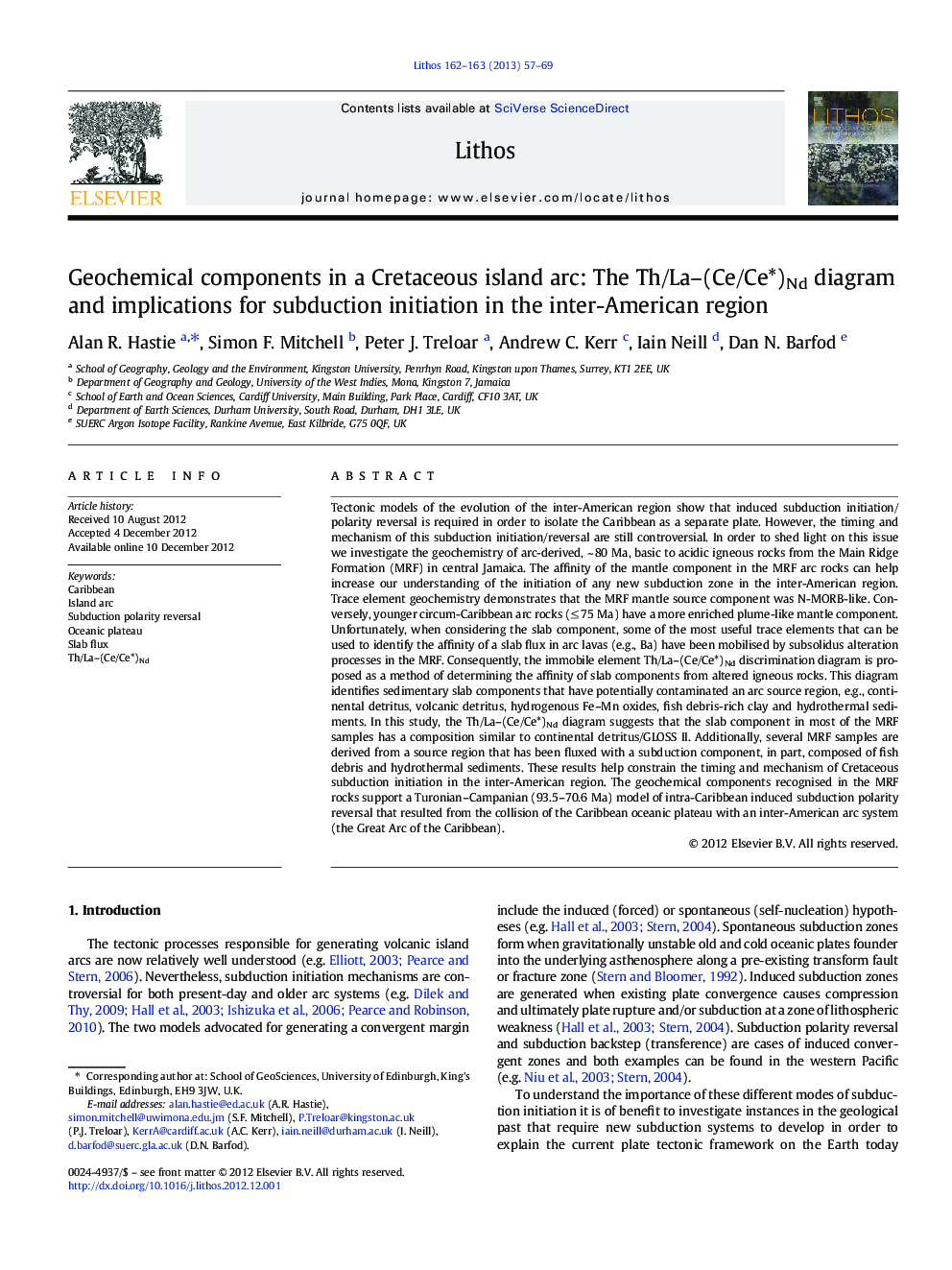| کد مقاله | کد نشریه | سال انتشار | مقاله انگلیسی | نسخه تمام متن |
|---|---|---|---|---|
| 4716282 | 1638695 | 2013 | 13 صفحه PDF | دانلود رایگان |

Tectonic models of the evolution of the inter-American region show that induced subduction initiation/polarity reversal is required in order to isolate the Caribbean as a separate plate. However, the timing and mechanism of this subduction initiation/reversal are still controversial. In order to shed light on this issue we investigate the geochemistry of arc-derived, ~ 80 Ma, basic to acidic igneous rocks from the Main Ridge Formation (MRF) in central Jamaica. The affinity of the mantle component in the MRF arc rocks can help increase our understanding of the initiation of any new subduction zone in the inter-American region. Trace element geochemistry demonstrates that the MRF mantle source component was N-MORB-like. Conversely, younger circum-Caribbean arc rocks (≤ 75 Ma) have a more enriched plume-like mantle component. Unfortunately, when considering the slab component, some of the most useful trace elements that can be used to identify the affinity of a slab flux in arc lavas (e.g., Ba) have been mobilised by subsolidus alteration processes in the MRF. Consequently, the immobile element Th/La–(Ce/Ce*)Nd discrimination diagram is proposed as a method of determining the affinity of slab components from altered igneous rocks. This diagram identifies sedimentary slab components that have potentially contaminated an arc source region, e.g., continental detritus, volcanic detritus, hydrogenous Fe–Mn oxides, fish debris-rich clay and hydrothermal sediments. In this study, the Th/La–(Ce/Ce*)Nd diagram suggests that the slab component in most of the MRF samples has a composition similar to continental detritus/GLOSS II. Additionally, several MRF samples are derived from a source region that has been fluxed with a subduction component, in part, composed of fish debris and hydrothermal sediments. These results help constrain the timing and mechanism of Cretaceous subduction initiation in the inter-American region. The geochemical components recognised in the MRF rocks support a Turonian–Campanian (93.5–70.6 Ma) model of intra-Caribbean induced subduction polarity reversal that resulted from the collision of the Caribbean oceanic plateau with an inter-American arc system (the Great Arc of the Caribbean).
► A mantle plume component is found in Cretaceous Caribbean arc rocks.
► The Th/La–(Ce/Ce*)Nd diagram distinguishes sedimentary components in a slab flux.
► Caribbean subduction polarity reversal occurred in the Turonian–Campanian.
Journal: Lithos - Volumes 162–163, March 2013, Pages 57–69